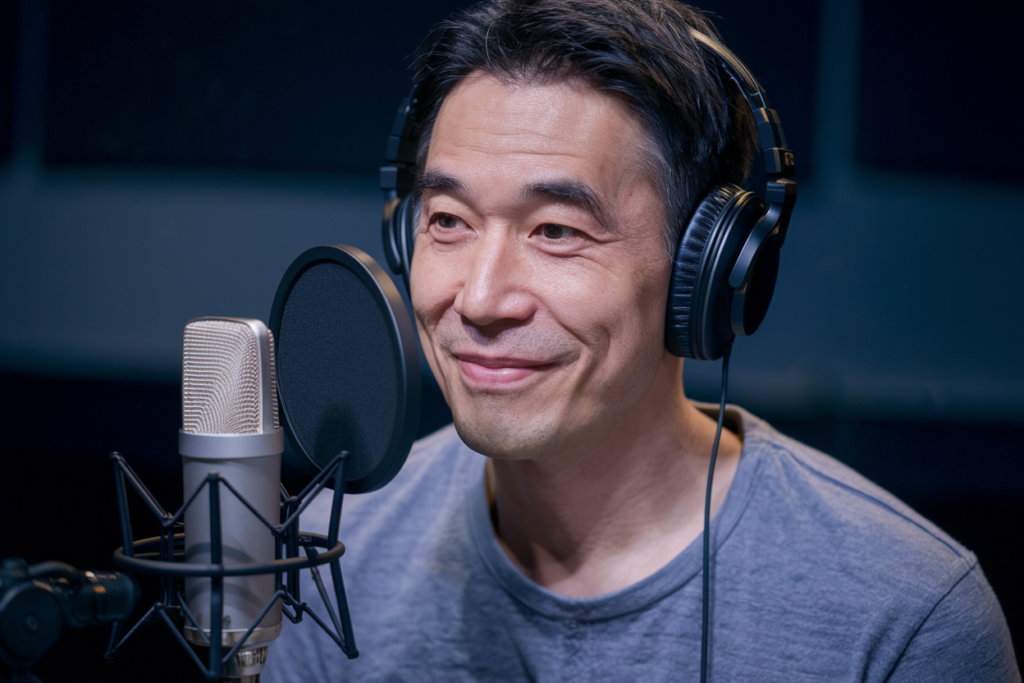Key Takeaways
- Cultural Force: The Japanese language is not just a means of communication but a powerful cultural force that has influenced art, literature, and international relations throughout history.
- Historical Evolution: From the introduction of kanji to the development of hiragana and katakana, Japanese has undergone significant transformations reflecting Japan’s rich cultural heritage.
- Modern Global Influence: Contemporary Japanese culture, including anime and J-pop, plays a crucial role in making the language accessible to global audiences while impacting various industries like gaming and automotive.
- Artistic Significance: The intricacies of the Japanese language enhance its literature and arts, allowing for nuanced emotional expression and beautifully crafted calligraphy.
- Regional Linguistic Impact: Japanese has influenced neighboring languages such as Ainu and Ryukyuan, showcasing its role in regional dynamics and cross-cultural exchanges.
- Globalization Role: As globalization progresses, knowledge of Japanese becomes increasingly valuable for businesses looking to engage with the unique consumer behaviors within Japan.
Have you ever wondered how the Japanese language has shaped the course of history? This fascinating topic reveals not just a means of communication but a powerful cultural force that has influenced art, literature, and even international relations.
From its intricate writing systems to unique expressions, the Japanese language reflects centuries of tradition and evolution. Understanding its historical impact can deepen your appreciation for Japan’s rich culture and heritage. So let’s dive into how this beautiful language has woven itself into the fabric of history and continues to resonate today.
Overview of the Japanese Language
The Japanese language boasts a complex and fascinating history that reflects Japan’s cultural evolution. With over 125 million speakers, it serves as a crucial medium for communication in Japan and among its global diaspora.
Historical Development
Japanese has undergone significant transformations since its inception. Early forms of the language, influenced by Chinese through trade and cultural exchange, emerged around the 8th century. The introduction of kanji (Chinese characters) shaped writing systems, while hiragana and katakana developed to express native sounds. These unique scripts illustrate Japan’s linguistic adaptability and creativity throughout centuries.
During different historical periods, such as the Heian era (794-1185), literature flourished with works like “The Tale of Genji.” This era solidified Japanese as a distinct literary language. The Edo period (1603-1868) further enriched vocabulary through contact with Western languages during trade.
Modern Influence
In contemporary times, Japanese continues to influence various fields globally. Its incorporation into popular culture—anime, manga, and J-pop—has made it accessible to international audiences. Additionally, the rise of technology emphasizes the importance of learning Japanese for business interactions in industries such as gaming and automotive manufacturing.
Japanese also affects linguistic trends worldwide. Loanwords from English appear frequently in everyday conversation, showcasing an evolving lexicon that adapts to modern needs while retaining traditional elements.
Understanding these aspects can foster deeper appreciation for not just the language itself but also its role in shaping history and culture across borders.
Cultural Significance
The Japanese language holds immense cultural significance, shaping various aspects of life in Japan and influencing global perspectives. Its unique expression methods enrich art and literature, reflecting deep-rooted traditions.
Literature and Arts
Japanese literature boasts a rich heritage, from ancient poetry to contemporary novels. Classic works like “The Tale of Genji” highlight the elegance of the language, showcasing its ability to convey nuanced emotions. Modern authors continue this tradition, using unique expressions that resonate with both domestic and international audiences. The arts also benefit from the language’s intricacies; calligraphy transforms written characters into visual masterpieces, symbolizing harmony between form and meaning.
Education and Language Preservation
Education plays a crucial role in preserving the Japanese language. Schools emphasize not only linguistic skills but also cultural values embedded within the language. Learning institutions promote traditional arts, ensuring younger generations appreciate their heritage while adapting to modern influences. Additionally, community initiatives encourage bilingualism, fostering connections with international cultures while maintaining strong ties to Japanese identity.
Linguistic Influence on Neighboring Regions
Japanese language influences extend beyond its borders, affecting neighboring regions and languages. This influence reflects Japan’s historical interactions with other cultures.
Ainu and Ryukyuan Languages
Ainu and Ryukyuan languages showcase distinct linguistic features influenced by Japanese. Ainu, spoken by the indigenous people of Hokkaido, incorporates loanwords from Japanese due to cultural exchanges over centuries. Similarly, the Ryukyuan languages, including Okinawan, share vocabulary and phonetic patterns with Japanese. These connections illustrate how regional dynamics shape language evolution.
Influence on East Asian Languages
Japanese has also impacted East Asian languages through trade and cultural exchange. Chinese characters (kanji) were adopted into the Japanese writing system in the 8th century, leading to shared vocabulary between Chinese and Japanese. Korean has absorbed numerous terms from Japanese as well, particularly during periods of political interaction in the 20th century. This cross-pollination highlights how Japanese serves as a bridge among East Asian cultures while showcasing its adaptability within various linguistic contexts.
Japanese Language in Global Context
The Japanese language holds a unique position in the global landscape, influencing various cultures and languages.
Impact on Western Languages
Japanese has contributed significantly to Western languages, especially through cultural exports like anime and music. Terms such as “manga” and “kawaii” have found their way into everyday English vocabulary. Many English speakers use these words without realizing their Japanese origins. This integration showcases how language evolves with cultural exchange, enriching both parties involved. The adoption of loanwords highlights the fascination with Japan’s culture while also reflecting societal trends.
The Role of Japanese in Globalization
As globalization expands, so does the reach of the Japanese language. Businesses recognize its importance for accessing markets in Japan and collaborating with local partners. Learning Japanese opens doors to understanding consumer behavior and preferences that differ from Western norms. Moreover, popular media—like J-pop and video games—has increased interest in learning the language, creating communities around shared interests worldwide. With more resources available than ever before, diving into Japanese offers not just linguistic skills but also deeper insights into an influential culture shaping modern society.
Understanding these dynamics enhances your appreciation for how interconnected our world is today, largely influenced by languages like Japanese that bridge cultural gaps globally.
Conclusion
The Japanese language is more than just a means of communication; it’s a lens through which you can view Japan’s rich cultural tapestry. Its historical evolution reveals how language shapes identity and fosters connections across borders. As you explore Japanese culture, remember that each word carries centuries of tradition and modern innovation.
Your interest in the language opens doors to understanding not only Japan but also its influence on global culture. Whether you’re captivated by literature, art, or modern media, engaging with Japanese offers insights into shared human experiences. Embracing this journey enriches your appreciation for both the language and the diverse world we inhabit.
Frequently Asked Questions
What is the significance of the Japanese language in history?
The Japanese language has played a crucial role as a cultural force, influencing art, literature, and international relations throughout Japan’s history. Its intricate writing systems and unique expressions reflect Japan’s rich traditions and evolution over centuries.
How many people speak Japanese today?
Japanese has over 125 million speakers worldwide. It serves as an essential communication medium in Japan and among its global diaspora, highlighting its importance both locally and internationally.
What are the main writing systems used in Japanese?
Japanese utilizes three main writing systems: kanji (characters borrowed from Chinese), hiragana (a phonetic script), and katakana (used primarily for foreign words). These systems together create a complex yet expressive language.
How did historical events shape the Japanese language?
The Japanese language evolved significantly since the 8th century due to various influences, including trade with China. The Heian era saw flourishing literature, while Western contact during the Edo period enriched vocabulary through new concepts.
In what ways does modern culture influence the learning of Japanese?
Modern cultural phenomena like anime, manga, and J-pop have made learning Japanese increasingly popular worldwide. Additionally, understanding these media promotes interest in exploring Japan’s rich heritage and contemporary society.
Why is it important to learn Japanese for business?
Learning Japanese is crucial for businesses aiming to enter or understand the local market. As globalization expands, knowledge of this language facilitates better communication with consumers and enhances business relationships in Japan.
How does education contribute to preserving the Japanese language?
Education plays a vital role by promoting linguistic skills alongside cultural values. Schools instill appreciation for both traditional aspects of the language and modern usage to maintain its relevance in society.
What impact has Japanese had on other languages?
Japanese has influenced neighboring languages such as Ainu and Ryukyuan through loanwords due to cultural exchanges. It also impacted East Asian languages like Korean via political interactions that incorporated numerous terms from Japan.
How do cultural exports affect perceptions of the Japanese language globally?
Cultural exports like anime and music have introduced many Western audiences to terms such as “manga” and “kawaii.” This integration showcases how cross-cultural exchanges enrich both languages involved while increasing interest in learning them.







